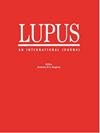系统性红斑狼疮患者的疼痛体验及其影响:以患者视角为重点的定性访谈研究
IF 1.9
4区 医学
Q3 RHEUMATOLOGY
引用次数: 0
摘要
背景疼痛是系统性红斑狼疮(SLE)患者最常报告的症状之一,通常也是最先出现的主观症状之一。先前的一项研究表明,大多数系统性红斑狼疮患者报告的系统性红斑狼疮相关疼痛程度较低。然而,有一小部分患者的疼痛程度≥40 毫米(0-100 毫米),并且在疲劳、焦虑、抑郁和降低健康相关生活质量方面有很大的症状负担。本研究探讨了患者在日常生活中与系统性红斑狼疮相关的疼痛的经历和影响,以及要求医疗服务提供者提供的支持。方法 共有 20 名患者参加了个人半结构式访谈,访谈内容经记录后通过内容分析法进行了分析。系统性红斑狼疮相关疼痛具有多面性,表现为长期、不可预测、迁移性和各种身体感觉。疼痛会带来多方面的后果,通过干扰角色和人际关系来限制日常生活,并引发各种情绪,包括生存思考。受访者采用综合策略来应对疼痛,包括内在资源、家人和重要他人的支持,以及药物和缓解治疗。他们表达了对安全感和认可的需求,这涉及到个体化的支持和医疗服务的可及性。除了药物治疗外,受访者还使用了多种策略来控制疼痛,包括他们的内在资源以及家人和其他人的支持。信息提供者要求医疗服务提供者提供的支持包括理解、同情、个性化护理和可及性。本文章由计算机程序翻译,如有差异,请以英文原文为准。
The experience and implications of pain in systemic lupus erythematosus: A qualitative interview study focusing on the patient’s perspective
BackgroundPain is one of the most frequently reported symptoms and often one of the first subjective symptoms in patients with systemic lupus erythematosus (SLE). A previous study indicated that most patients with SLE reported low levels of SLE-related pain. However, a subgroup of patients reported high levels of pain ≥40 mm (0-100 mm) and had a substantial symptom burden in terms of fatigue, anxiety, depression, and reduced health-related quality of life. Thus, there is a need to elucidate the implications of high levels of pain in everyday life.AimThis study explored the patient’s experiences and implications of SLE-related pain in daily life and the support requested from healthcare providers.MethodA total of 20 patients, previously reported high levels of SLE-related pain intensity measuring ≥40 mm (0–100 mm) in a research context at one or two occasions participated in individual semi-structured interviews, which were transcribed and analysed with content analysis.ResultsThe interviews revealed four main categories and 13 generic categories. SLE-associated pain was described by its multifaceted nature, exhibiting longstanding, unpredictable, migrating, and various physical sensations. The pain entailed multidimensional consequences, restricting everyday life by interfering with roles and relationships and causing various emotions, including existential thoughts. The informants used comprehensive strategies to deal with the pain, including their inner resources, support from family and significant others, and pharmaceuticals and relieving treatments. They expressed the need for security and acknowledgement, which involved individualized support and accessibility of healthcare.ConclusionThis study provides comprehensive insights into the nature and multifaceted impact of SLE-related pain in different dimensions of the informants’ daily lives. Except for medications the informants used several strategies, including their inner resources and support from family and others, to manage the pain. Support requested from healthcare providers by the informants included understanding, compassion, individualized care and accessibility.
求助全文
通过发布文献求助,成功后即可免费获取论文全文。
去求助
来源期刊

Lupus
医学-风湿病学
CiteScore
4.20
自引率
11.50%
发文量
225
审稿时长
1 months
期刊介绍:
The only fully peer reviewed international journal devoted exclusively to lupus (and related disease) research. Lupus includes the most promising new clinical and laboratory-based studies from leading specialists in all lupus-related disciplines. Invaluable reading, with extended coverage, lupus-related disciplines include: Rheumatology, Dermatology, Immunology, Obstetrics, Psychiatry and Cardiovascular Research…
 求助内容:
求助内容: 应助结果提醒方式:
应助结果提醒方式:


